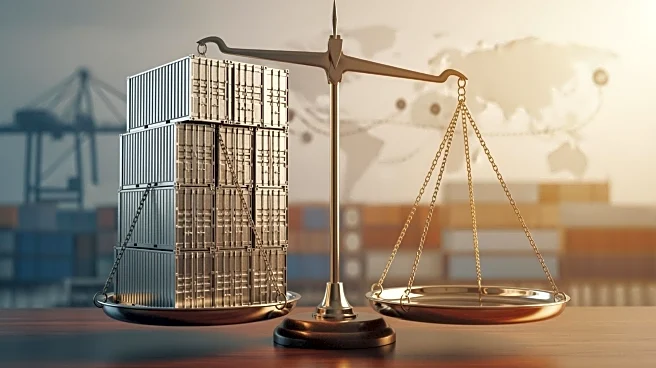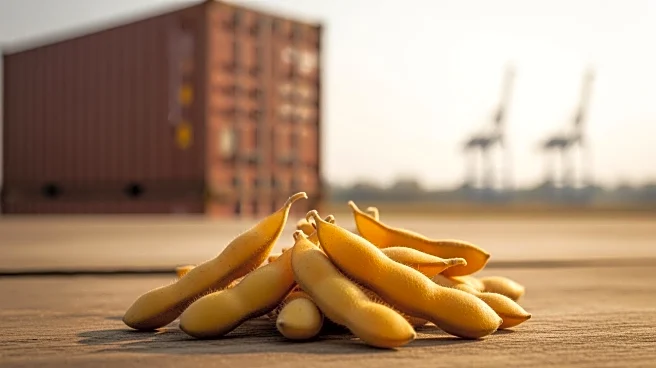What's Happening?
The U.S. steel industry has seen significant revitalization due to the Section 232 tariffs, which were reintroduced without exceptions nine months ago and strengthened to a 50% rate in June. These tariffs, rooted
in the Trade Expansion Act of 1962, are designed to protect national security and have been upheld legally. A report by the Coalition for a Prosperous America highlights that since their introduction in 2018, these tariffs have spurred 21 million metric tons of new or expanded investment in U.S. steelmaking capacity, marking the largest build-out in decades. Despite concerns, the tariffs have not fueled inflation, with U.S. inflation remaining below 2% prior to the COVID-19 pandemic. The U.S. International Trade Commission found that downstream price effects from the tariffs averaged just 0.2% annually, too small to influence consumer prices significantly.
Why It's Important?
The Section 232 steel tariffs are crucial for strengthening America's industrial base and securing its defense supply chains. They have proven compatible with low inflation and strong job growth, countering the global steel industry's chronic distortions. The CPA report documents a global steel overcapacity of 543 million metric tons, with half originating from China. This glut poses a risk of foreign dumping, which the tariffs aim to prevent. By limiting exemptions and enforcing a full 50% coverage, the tariffs have restored their effectiveness, ensuring that the U.S. does not become a dumping ground for excess global steel. This policy supports domestic steel production and utilization rates, which are nearing 80%, bolstering the U.S. economy and national security.
What's Next?
The U.S. Supreme Court is currently hearing arguments on whether President Trump has the authority to impose tariffs under the International Emergency Economic Powers Act. The outcome of this case could impact the future application of Section 232 tariffs. Meanwhile, the global steel industry continues to face challenges from overcapacity, particularly from China. The U.S. must maintain strong enforcement of these tariffs to protect its domestic industry from foreign dumping. The administration's current policy, with no exemptions and full coverage, aims to sustain the effectiveness of these trade measures.
Beyond the Headlines
The Section 232 tariffs highlight the broader implications of trade policy on national security and economic stability. They underscore the importance of having effective trade tools that advance U.S. interests. The legal debates surrounding presidential trade authority may shape future trade policies, influencing how the U.S. navigates global economic challenges. The tariffs also reflect a shift towards prioritizing domestic industry and reducing reliance on foreign imports, which could have long-term impacts on U.S. trade relations and economic strategy.














